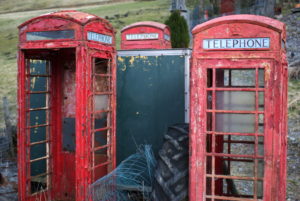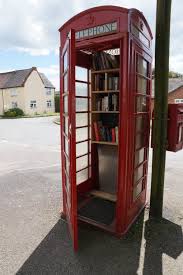Striking and iconic, the red telephone box has been a beloved fixture in both busy cities and more far-flung locations in the UK for over 90 years.
The image of Britain’s red telephone box goes hand in hand with the red bus and red letterbox, all easily recognisable symbols of Britain. The design was created by Sir Giles Gilbert Scott, a leading architect who won a Post Office sponsored competition with his K2 telephone box design in 1924.

Soon the K2 telephone box with its bright red colour, imposing cast iron exterior, and elegant domed top and crown insignia, became a common sight in the capital. Whilst popular in London, few K2 boxes were installed outside of the capital because of its weight and the associated cost.
Between 1926 and 1935, several new versions of the red telephone box were produced. The K3 looked a lot like the K2 but was smaller and made from concrete, which was found to crack over time. The K4 was much larger and had an additional letterbox and stamp machine. It was meant to be used in areas that didn’t have a post office, but the design proved to be so unpopular that only 50 models were ever produced, the box was too large and imposing, resulting in it being dubbed the ‘Vermillion Giant’.
The red telephone box goes national
It wasn’t until 1935 that Giles’ original cast iron design was updated to make it more suitable for use nationally. Giles was commissioned by the Post Office to design an updated version for the Jubilee of King George V. The aesthetics of the design remained very similar, but the K6 telephone box weighed in at 25% lighter than the K2. The new, lighter design made it suitable for use nationally, and by 1930 20,000 K6 telephone boxes could be found throughout the UK.
Between 1930 and 1985, several variations of the red phone box were designed, but the K6 did the job best and remained the most prominent model.
Privatisation of the public telephone network
 In 1984 British Telecom took over control of our public telephone network from the Post Office.
In 1984 British Telecom took over control of our public telephone network from the Post Office.
Soon after in 1985 they introduced their KX range of phone boxes and we began to see a shift in the appearance of the phone boxes on our streets. The KX range were rectangular, light-weight, aluminium constructions. They were designed to be easier to maintain and harder to vandalise than their predecessors. Whilst they were perhaps more practical, there was no denying that they were far less attractive than the red telephone boxes that the nation had become so fond of.
Sadly, many of the old red phone boxes were replaced with the rather uninspiring KX100 telephone box.
Where are the red phone boxes today?
Today, there are only around 8,000 red telephone boxes being used as they were intended. Some of the older models that are still standing are now being protected by their listed status,

and many other boxes have been converted for other uses to give them a new lease of life and stop them falling into disrepair.
Whilst the red phone box is a far less common sight these days, it is still one of the most recognisable images of our country.
This article is part of our famous designs series, we've also done articles on